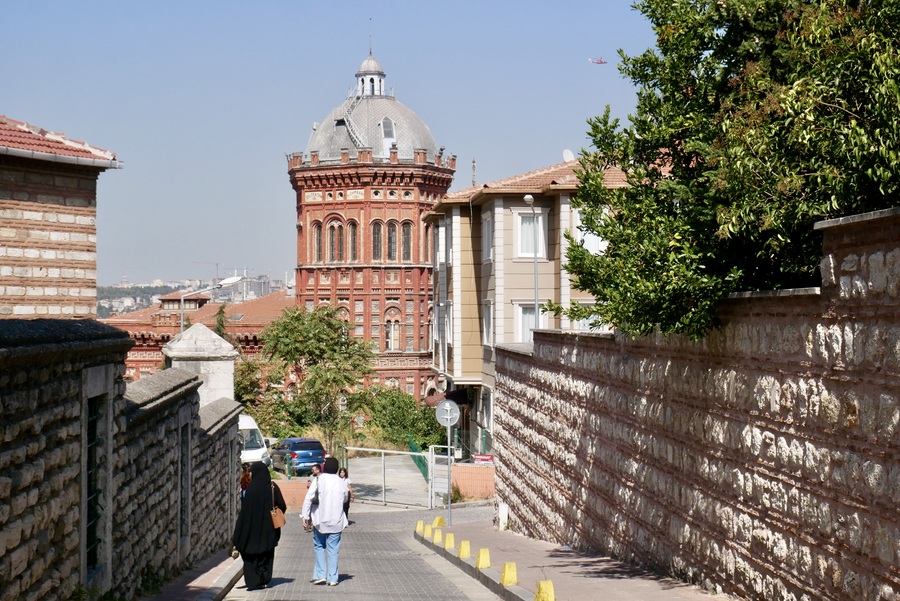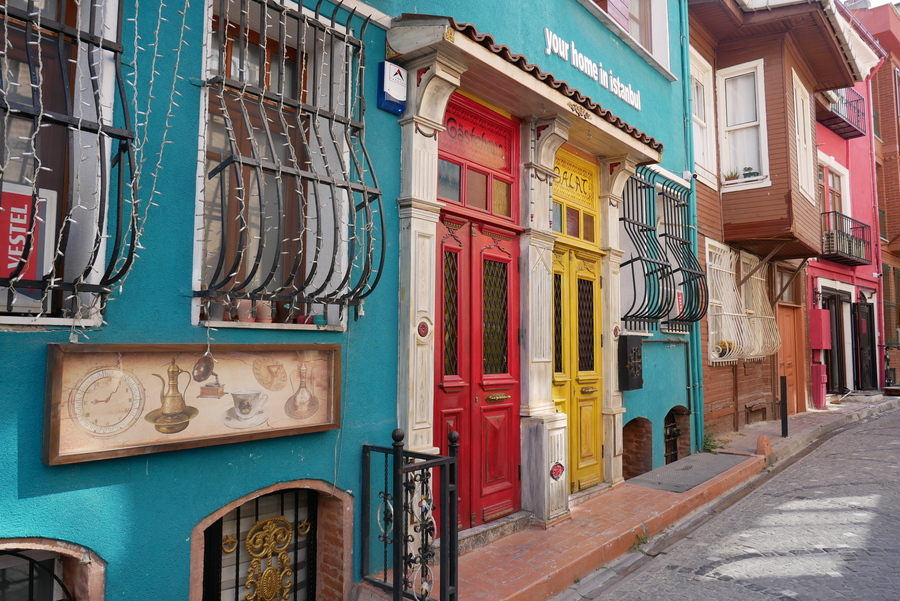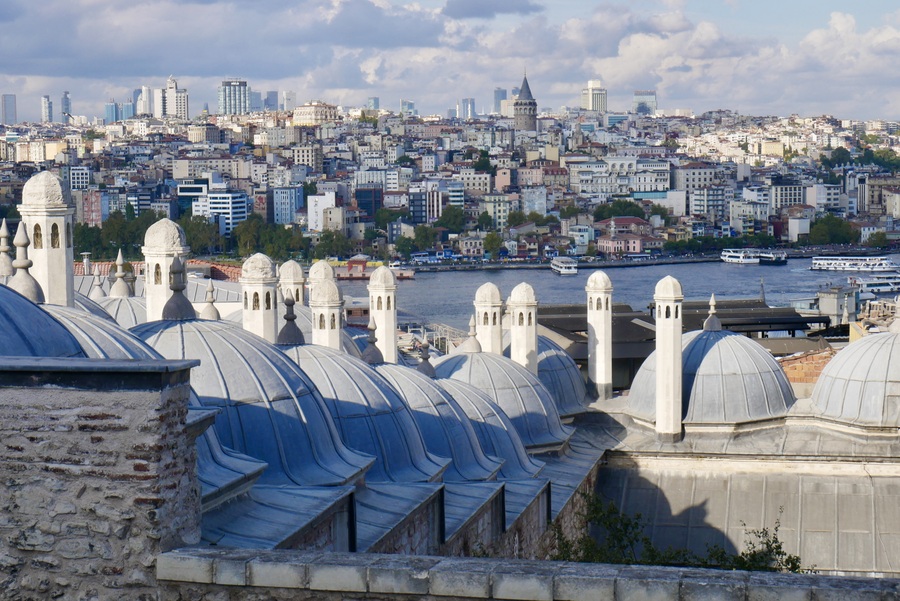
Incredible Things to Do in Istanbul Turkey
Istanbul is one of the world’s great cities. Historically known as Byzantium and then Constantinople, Istanbul straddles two continents and embraces multiple worlds—both geographically and culturally.
The city is vibrant and cosmopolitan, and teeming with humanity. Minarets stud the sky, crowning Istanbul’s hilltops. Boats glide gently down the Bosphorus, while pigeons flock overhead. Exotic spice markets burst with color. Neighborhoods hold traces of the different empires that once laid claim to the Golden Horn. It’s the kind of place where the push and pull of modernity and tradition collide.
The type of place in which you’ll never run out of things to see and do.
Top Incredible Istanbul Attractions
Istanbul knocked our socks off from the moment we began exploring. Within its fabric, the iconic city blends culture and architecture from different historical periods.
In the West, Istanbul flies somewhat under the radar. While its riches are plentiful and its sheer number of attractions overwhelming, the city is not a mainstream tourist destination. I couldn’t believe life had taken me to 100+ countries before I finally stepped foot in the sprawling Turkish metropolis.
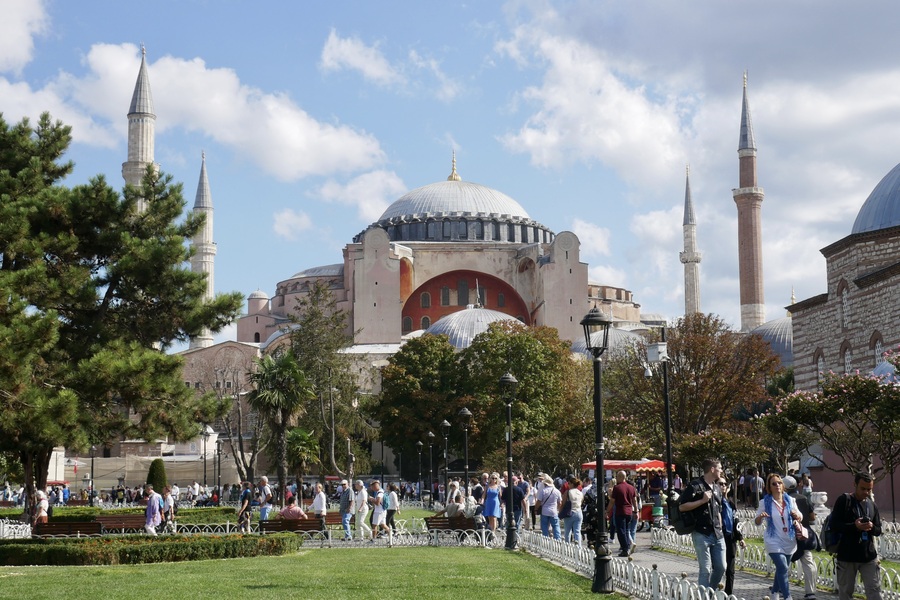
We spent five days in Istanbul during our trip to Turkey and could have easily extended our stay.
I’ve broken this post up into three sections: things to see in the Old City (Sultanahmet), things to see in the New City, and additional attractions beyond the two main tourist zones.
If you only have one day in Istanbul, you’ll likely want to focus your itinerary on the world-renowned attractions that lie within Sultanahmet. With two or three days, you can incorporate the sites north of the Golden Horn. With four or more days, you’ll have time to include some of the neighborhoods outside of Istanbul’s tourist core.
Things to See in Old Town (Sultanhamet)
Old Town showcases Istanbul’s glorious past. It is filled to the brim with mosques, palaces, churches and houses dating back to the Byzantine and Ottoman periods.
Many of Istanbul’s iconic attractions lie scattered about Sultanahmet. Positioned within easy walking distance of one another, their proximity makes them easy to visit in close succession.
-
The Hagia Sophia
The Hagia Sofia—Istanbul’s most enduring symbol—is one of the world’s great religious monuments.
The church-turned-mosque is an architectural marvel that has gone through significant transformations throughout its history.
The structure that stands today was built as a Christian church in the 6th century, under the Byzantine emperor Justinian I. It stands at the site of two previous churches and a Pagan temple.
The Hagia Sophia served as an Eastern Orthodox church until the Fourth Crusade in 1204 AD, when it became a Catholic church. Then, from 1261 until the Ottoman conquest of Constantinople, it once again changed hands to the Eastern Orthodox religion.
In subsequent centuries it became a mosque, a museum, and a mosque again.
The interior of the church beautifully blends Islamic and Christian influences. Chandeliers hang from the cavernous domed ceiling. Its interior has both Islamic inscriptions and lavish Christian mosaics.
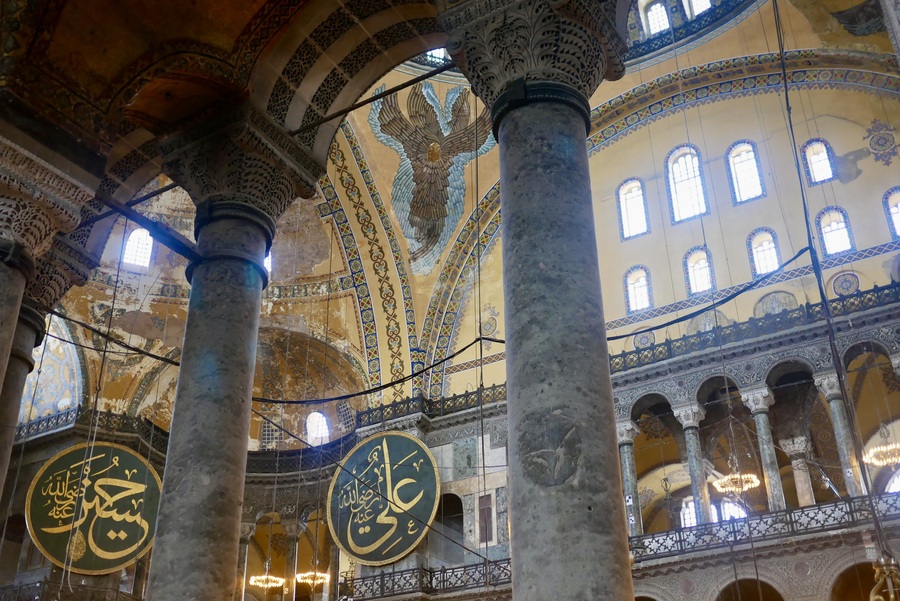
The Hagia Sophia’s prayer hall is a significant feat of engineering. Its cavernous dome is supported by four pendentives that facilitate the distribution of its weight. The dome’s design became a prototype that inspired other Ottoman grand mosques.
Due to its popularity, you won’t be able to experience the Hagia Sophia in solitude. The mosque is a top Istanbul highlight that draws huge crowds.
If possible, try to visit the Hagia Sophia in the early morning to avoid long entrance lines.
-
The Blue Mosque
The Blue Mosque (officially named the Sultan Ahmed Mosque) is a stunning showcase of Islamic art and geometry.
The Blue Mosque is one of Istanbul’s most renowned and photogenic buildings. It is the brainchild of its namesake—Sultan Ahmed I—whose tomb is located on site.
The delicate artistry of the Blue Mosque left us awestruck. Blue İznik tiles adorn the interior, giving the mosque its unofficial name.
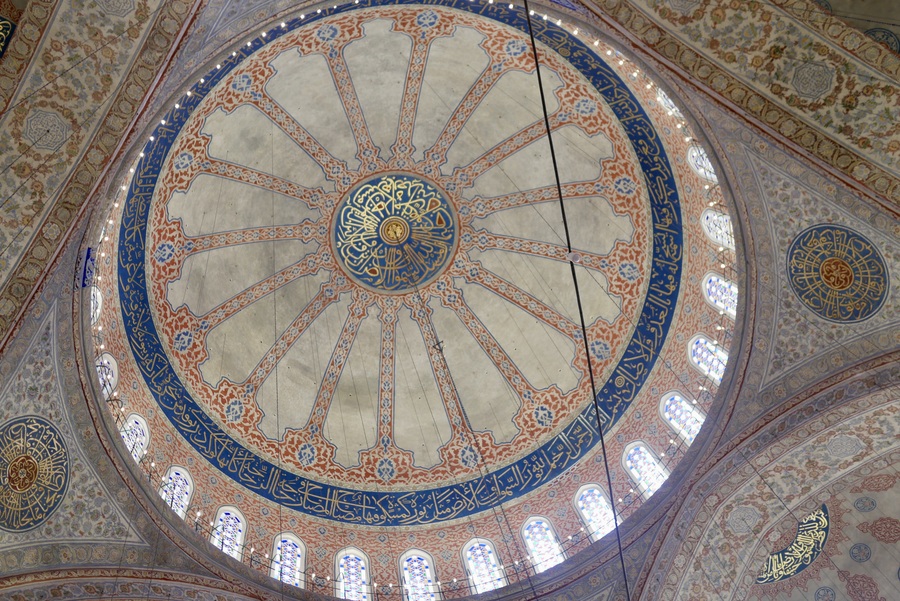
The Blue Mosque is second only to the Hagia Sophia in terms of popularity. While you won’t encounter the long lines and tourist throngs of the cathedral-turned-mosque next door, visiting the Blue Mosque early improves your chances of avoiding a sardine can experience.
-
The Hippodrome
If you’re in Sultanahmet, it’ll be difficult to miss the Hippodrome of Constantinople—a large plaza that was once used as a public arena for ceremonies, chariot races, and gladiator games. The Hippodrome functioned throughout the Roman, Byzantine, and Ottoman periods.
Today, it is a public plaza, known as Sultanahmet Square. It lies adjacent to the Blue Mosque and only a few steps away from the iconic Hagia Sophia.
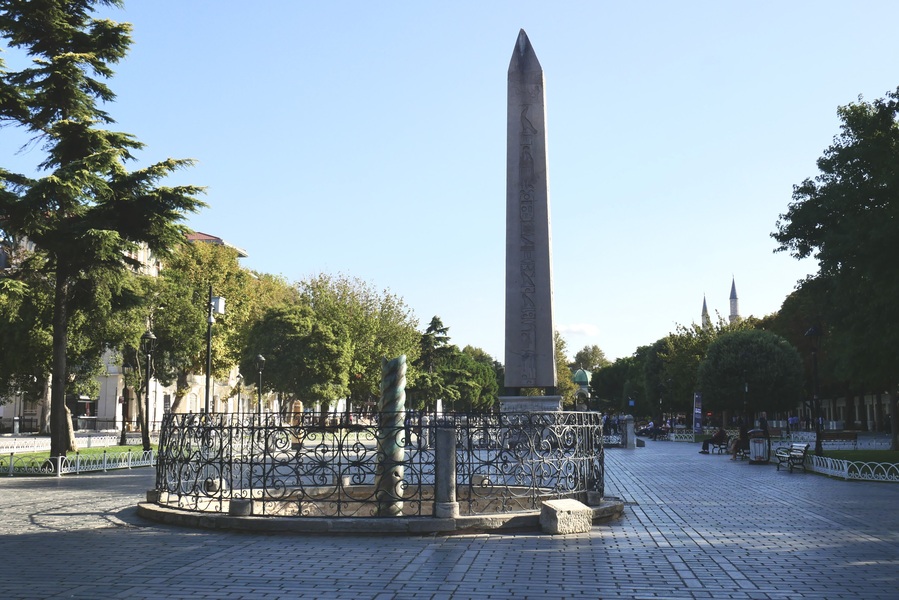
You’ll find little evidence of the Hippodrome’s past functionality when strolling its cobbled promenade, but the area is notable for some imported monuments. The square houses a Serpent Column from Delphi, an Obelisk of Thutmosis III from Aswan Egypt and a neo-Byzantine fountain from the German government.
-
The Topkapı Palace
Though I’ve seen a number of royal palaces around the world, nothing quite prepared me for the splendor of Istanbul’s Topkapı Palace.
The royal palace served as the Ottoman Empire’s administrative, educational and artistic center for nearly four hundred years, from the 1460s until 1856.
The palace complex consists of four main courtyards and many smaller buildings adorned in ornate Islamic motifs. Female members of the Sultan’s family lived in the harem, which requires an additional (and worthwhile) entrance ticket.
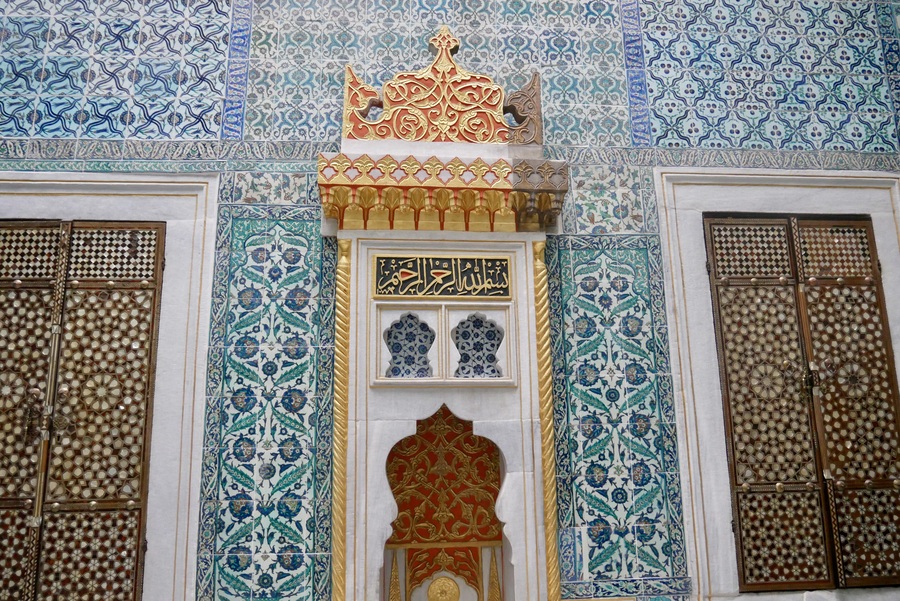
The Topkapı Palace and its harem are top Istanbul highlights. Within the complex, you’ll find a treasury, a calligraphy room, a library, a kitchen, and pavilions.
We were glad we made it to the Topkapi Palace early, as the long line was seemingly growing by the minute. If you are hoping to save time, you can book guided tours of the Topkapı Palace with skip-the-line tickets.
Gulhane Park
Gülhane Park is among the oldest and largest parks in Istanbul. For centuries—until 1912—the park served as the outer garden of the Topkapı Palace and was not open to the public.
The park’s name, Gülhane, translates to “House of Roses.” In spring and summer, more than 80,000 blooming roses add color to the surrounding greenery.
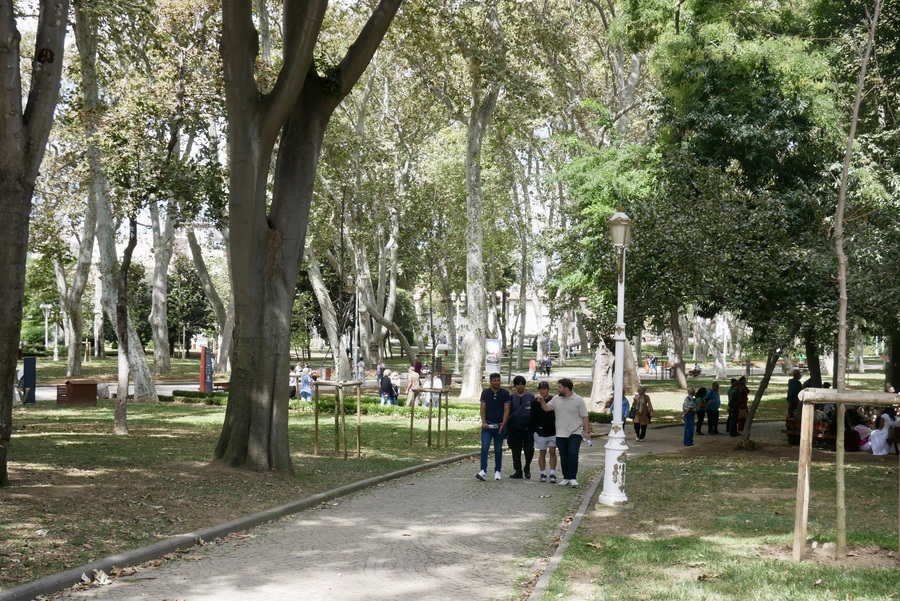
Gulhane Park is the perfect place to enjoy an afternoon rest amidst a hectic day of sightseeing.
While we sat in the shade of an oak tree and let Elio play in the grass, I took the time to observe my surroundings. The park showcases a broad cross-section of Turkish society. I saw groups of friends catching up, lovers strolling arm in arm, young families picnicking on the grass, and tourists with camera in tow.
-
The Basilica Cistern
The Basilica Cistern in Sultanahmet lies underground, like a subterranean cathedral. The place is equal parts impressive and spooky. Its slightly creepy lighting gives this underground water system—built by the Byzantines in the sixth century—an other-worldly atmosphere.
Emperor Justinian commissioned the cistern in 532. The largest surviving Byzantine cistern in İstanbul, it was constructed using 336 columns, many of which were salvaged from ruined temples.
The enlarged cistern provided a water filtration system for the Great Palace of Constantinople (a ruined imperial Byzantine complex that was once the center of administration in the area). It continued to provide water to the Topkapı Palace and its surrounding areas after the Ottoman conquest in 1453.
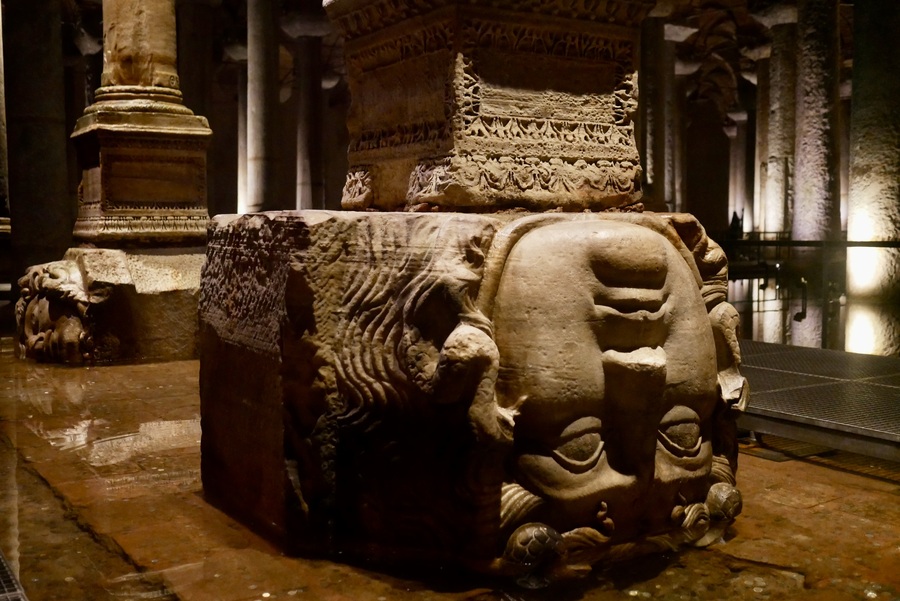
The cistern’s raised platforms weave through an infinity hall of columns, while artificial lighting basks the stonework in alternating shades and colors. Interspersed among the columns, you’ll see sculptures and art displays.
The basilica’s symmetry and sheer grandeur are breathtaking. Look out for columns with inscriptions and carvings.
Dan and I visited the cistern just before the 10pm closing time. As it turns out, visiting the cistern is a fantastic thing to do in Istanbul at night. When we visited, the lack of crowds (we were the only ones there) made the experience all the more surreal.
-
Suleymaniye Mosque
The Suleymaniye Mosque sits atop one of Istanbul’s seven hills and commands impressive views over the Golden Horn. Commissioned by Suleyman the Magnificent in 1550, it is the largest Ottoman-era mosque in the city.
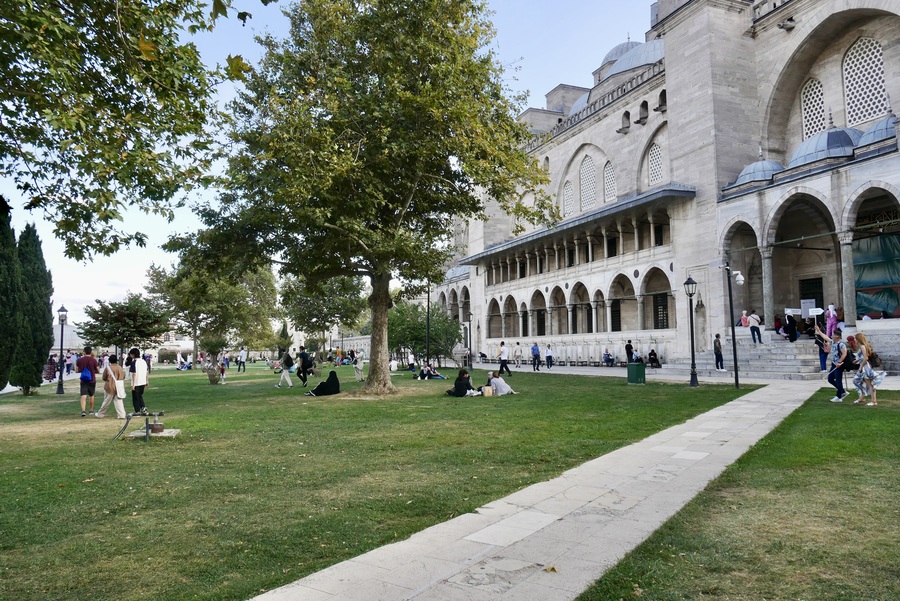
The Suleymaniye Mosque is part of a large religious complex that includes a hospital and madrassa. On its grounds, you’ll find a green grassy lawn, viewpoints over New Istanbul, and an enclosed cemetery with mausoleums of Suleyman the Magnificent and his wife.
The mosque courtyard is full of picnicking families. Elio loved running around the grass, while we enjoyed soaking in some of Istanbul’s best views.
-
The Grand Bazaar
The exotic Grand Bazaar, Istanbul’s world-renowned historic marketplace, is a feast for the senses. It is one of the largest covered markets in the world, as well as one of the oldest. In fact, many consider the Grand Bazaar to be the world’s first shopping mall.
The bazaar has been an important trading center since 1461. It was a bustling market during Byzantine times, and grew even larger when the Ottomans arrived. At its prime, the Grand Bazaar was the center of trade for the entire Ottoman Empire.
The Grand Bazaar’s labyrinthine passageways contain some of Istanbul’s most photogenic nooks and crannies. Its 60 streets and 4,000 shops overflow with carpets, lamps, jewelry, and antiques.
Many of the stalls in the bazaar are grouped in clusters called “bedestens.” Traditionally, each bedesten of the bazaar had its own unique product. You’ll find sections full of tourist trinkets, and others selling jewelry, or leather, or carpets.
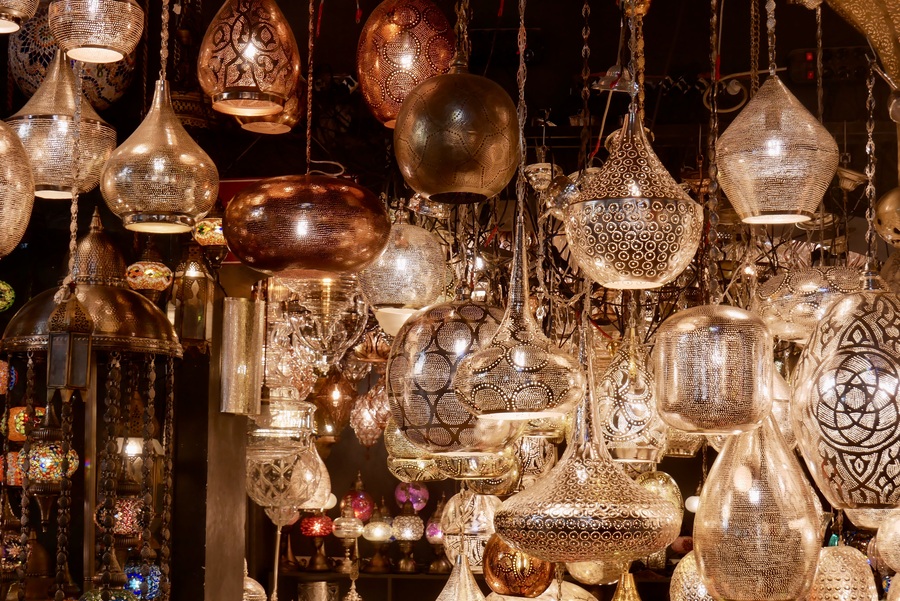
The merchants in the Grand Bazaar have a reputation for being aggressive. Maybe we got lucky, or maybe we just expected worse, but we didn’t find the shopkeepers to be pushy at all. The shopping experience was actually quite pleasant, and we even left the covered marketplace with a beautiful piece of calligraphy.
-
The Spice Bazaar
The Spice Bazaar (known in Turkish as the Egyptian Bazaar) is one of Istanbul’s oldest markets.
While the Grand Bazaar may be the largest and most famous of Istanbul’s covered markets, this spice market wins the prize for being the most colorful, fragrant, and flavorful (free samples of tea and Turkish delight are plentiful).
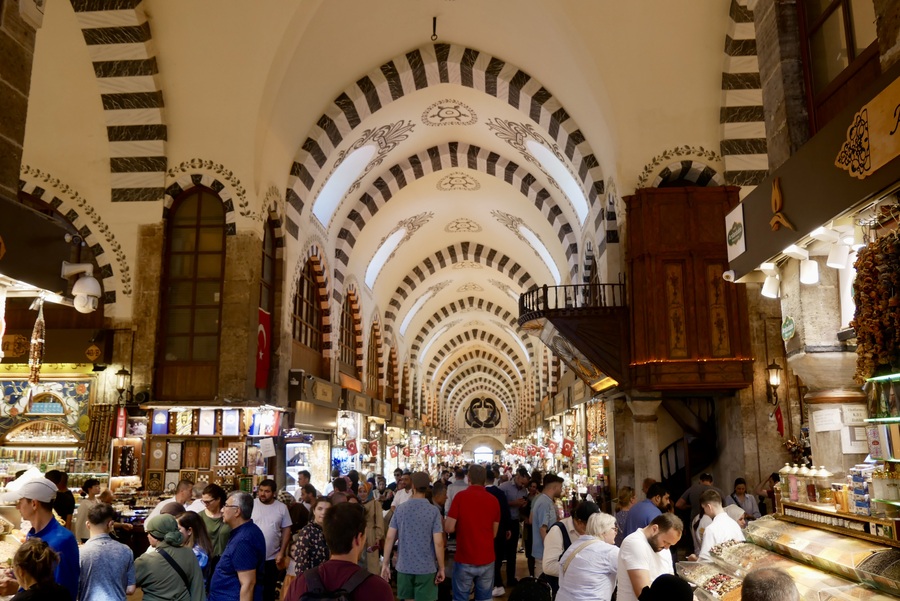
While negotiating is usually expected in the Grand Bazaar, the spice bazaar has fixed prices for the most part. And the prices are really high.
Additional stalls with dried fruits and sweets spill out from the covered area and line the nearby streets. If you’re looking to do some shopping, it is worth checking out the stalls right outside of the historic marketplace. Prices there are much more affordable.
-
Beyazit Square
As you make your way down the hill from the Grand Bazaar and Mosque of Suleymaniye, it’s worth passing by Beyazit Square. In Byzantine times, this square was called the Forum of Theodosius. Today, it is a lively plaza surrounded by the university and Beyazid II Mosque.
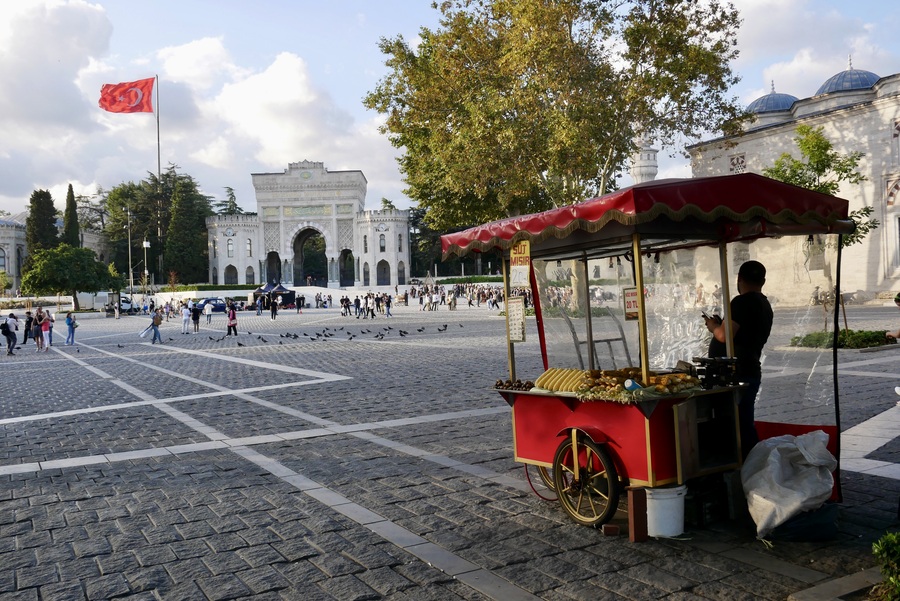
Both the university and tower are off limits to travelers.
But the tower is visible from the square, as is the ornate and beautiful grand entrance to the university.
-
The New Mosque
Istanbul’s “New” Mosque—a 400 year old center of worship adjacent to the Spice Bazaar and Galata Bridge—is one of the city’s finest.
The mosque sits in Eminönü, a neighborhood that historically housed a large Jewish population. Construction of the mosque originally began in 1597, under the orders of Sultan Mehmed III’s wife, Safiye Sultan. In situating the mosque in Eminönü, she hoped to extend Islamic influence in the city.
When her husband died in 1603, Safiye Sultan abandoned the project. Construction didn’t resume until 1660. When the mosque was completed, it was renamed New Valide Sultan Mosque (aka New Mosque).
The mosque’s interior design reminded me quite a bit of the Blue Mosque, with its gold leaf, İznik tiles and carved marble.
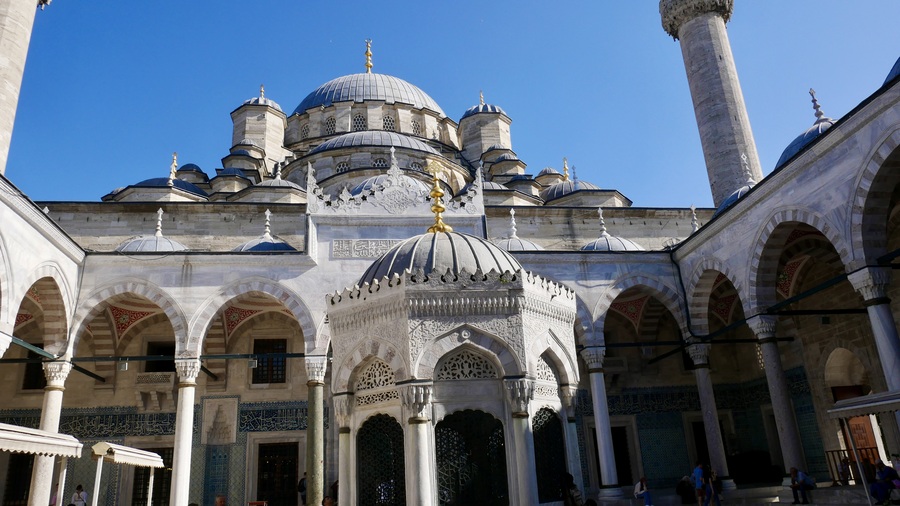
You’ll probably walk by the New Mosque at some point, whether it is part of your original itinerary or not.
And if you do, it is worth stepping inside to admire its ornately decorated dome.
-
Nuruosmaniye Baroque Mosque
Istanbul is home to more mosques than you’ll ever have time to visit.
But the Nuruosmaniye Mosque stood out to us for being different from the rest. Designed by a Greek non-Muslim architect named Simeon Kalfa, the Nuruosmaniye Mosque contains baroque and neoclassical elements from Europe.
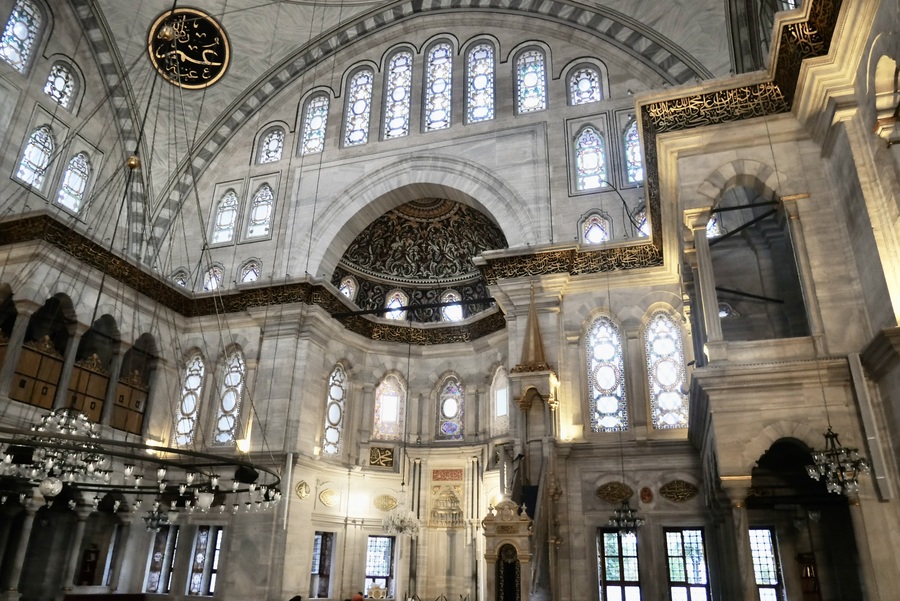
The mosque dates back to 1749. It isn’t a popular tourist attraction, nor is it on many lists of things to see in Istanbul.
But if you’re not mosque’d out after visiting the city’s heavy hitters, I recommend stopping by Nurousmaniye and admiring its baroque-style exterior and interior.
The Column of Constantine—a Byzantine relic that dates back to 330AD—can be found in the plaza by the mosque.
-
The Galata Bridge
The Galata Bridge spans the Bosphorus and connects some of the most popular districts in Old and New Istanbul.
The bridge carries a constant flow of pedestrians and buzzes with activity all throughout the day and night. Above, anglers line up with their fishing rods. Underneath, restaurants, cafes, and hookah bars serve drinks and food.
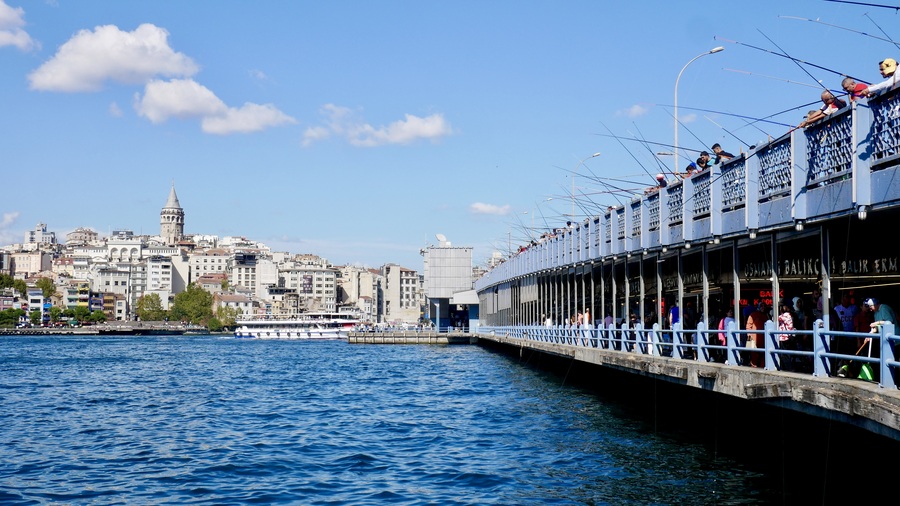
The present-day Galata Bridge replaced two other structures.
It isn’t the design of the bridge itself that is particularly noteworthy. Rather, it is the area’s entire ambiance—including the bustling cafes, the majestic views, the glistening water, and the swirling gulls.
Things to Do in the Istanbul New District
Situated on the European side of the city and across the bridge from Old Town, Beyoğlu is one of Istanbul’s most vibrant and cosmopolitan districts. It covers an area from Karaköy to Taksim Square and encompasses some of Istanbul’s most famous landmarks. In Byzantine times, this area was inhabited by the commercial colonies of Genoese and Venetian settlers.
In the Beyoğlu district, trade between Europeans and Ottomans flourished. The area quickly became a melting pot of cultures. Even today, New Istanbul attracts a diverse cross-section of society—from artists to students, and from young professionals to tourists.
-
The Galata Tower
The cylindrical Galata Tower stands guard over New Istanbul and is one of the city’s most recognizable landmarks.
Constructed as a watchtower in 1348 by the Genoese, it remains a testament to the city’s diverse architectural and cultural heritage. For centuries, the Romanesque-style tower was Istanbul’s tallest structure.
Even today, it dominates the city’s skyline.
The interior of the Galata Tower is now a museum that showcases the various periods in Istanbul’s history. Its upper balcony offers 360-degree views of the mosque-studded cityscape.
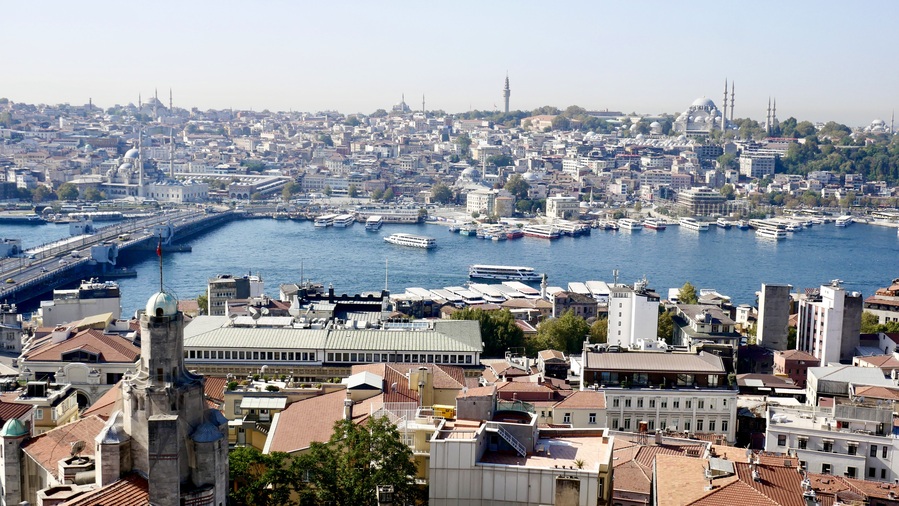
Admission to the Galata Tower is steep, so I recommend you time your visit wisely.
We visited the top of the Galata Tower on a smoggy day, when the most interesting views were completely backlit. If I were to return, I would try to book my tickets in advance and arrive around sunset—ensuring that I could soak in views of Istanbul during the day, and panoramas of the floodlit city after sundown.
-
Galata and Karakoy Neighborhoods
Famous landmark aside, the districts around the Galata Tower are worth exploring.
The neighborhoods of Galata and Karaköy lie just across the bridge from Eminönü and Istanbul’s Old Town. They are some of the trendiest and most picturesque sections of the city. The neighborhoods are colorful and lively. They boast multicultural architecture, trendy cafes, and religious relics that blend Istanbul’s heritage with its modern influences.
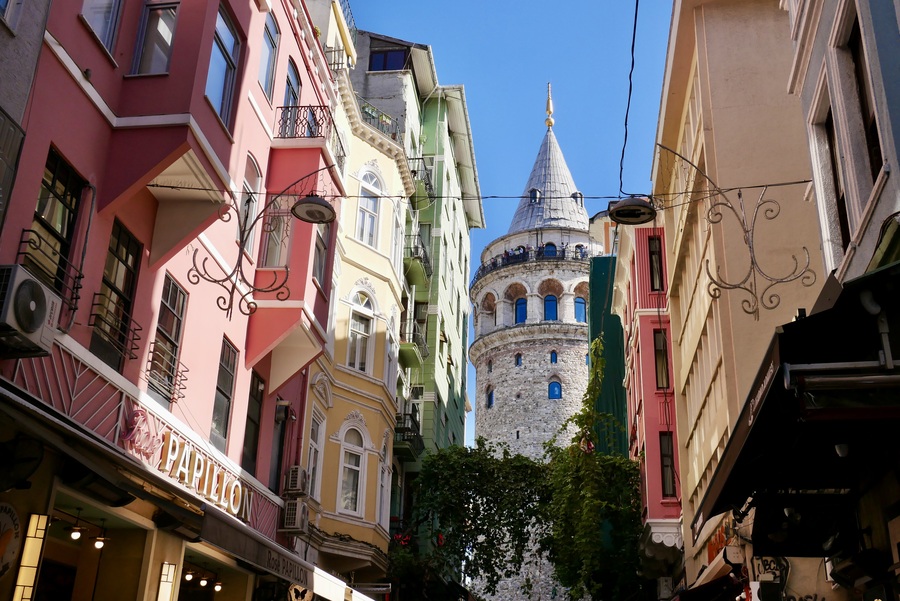
At the end of our Turkey trip, we stayed near the Galata Tower for three nights. While in the area, we enjoyed meandering down small picturesque streets, finding hidden passageways, and peeking into shops and galleries.
Unfortunately—and despite our original intentions—we didn’t spend much time soaking in the vibe of Karaköy’s hipster cafes and eateries during our trip.
There are simply too many things to do in Istanbul. And spending only five days in the city meant we didn’t have the time to experience it all.
-
Istiklal Street
Istiklal Street (Independence Avenue) teems with humanity and buzzes with activity. Each day, three million people meander up and down the pedestrian drag. One of the liveliest pedestrian promenades I’ve ever visited, Istiklal Street connects Taksim Square with the area around the Galata Tower.
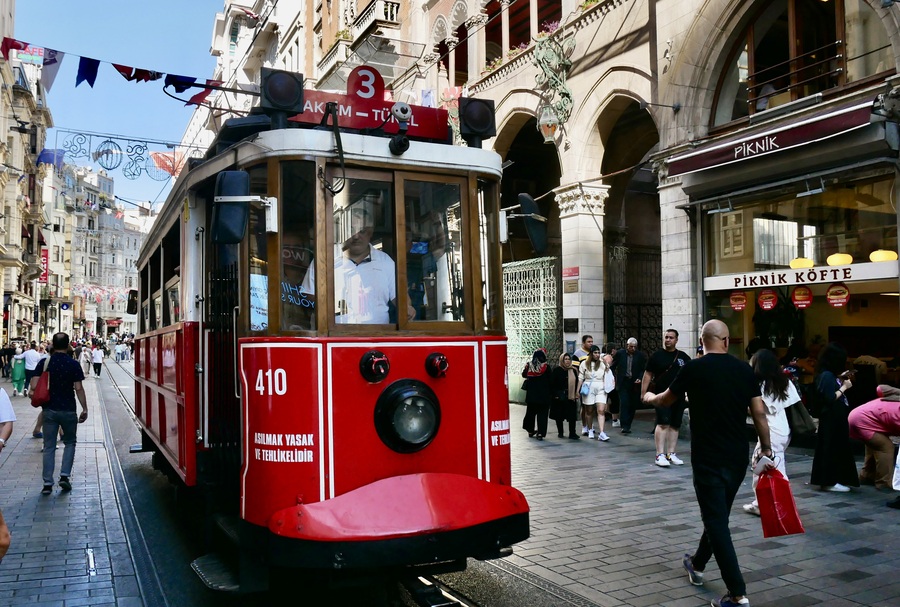
Istiklal Street is a microcosm of the city itself. You’ll find an entire cross-section of Istanbul on the crowded promenade. It is a place where people of all walks of life converge—young and old, devout and secular. On Istiklal Street, chadors bump up against mini skirts. Fast food joints sit beside century-old eateries. And quiet passageways conceal historical relics.
There are numerous places of interest along the bustling drag. You’ll find historical passages (Atlas, Terkos, Hazzopulo, Suriye and Çiçek), churches (St Antoine, Santa Maria), art galleries, and shops selling mouthwatering Turkish treats.
-
Taksim Square
If you head north along Istiklal Street, you’ll eventually find yourself in Taksim Square— a place which has been in the news time and again for demonstrations and protests.
Taksim Square is considered to be the heart of modern Istanbul, both geographically and symbolically (it features a large statue of Ataturk, the country’s founder).
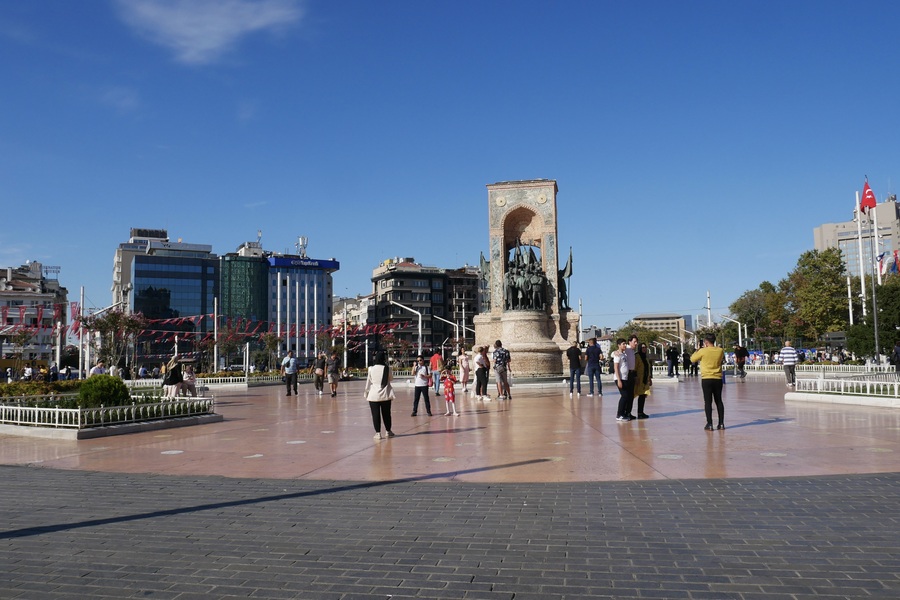
You’ll find numerous restaurants, hotels and travel agencies surrounding Taksim Square, in addition to the Ataturk Cultural Center and the Taksim Mosque.
The city landmark is also a transportation hub and the northern terminus of the tram that travels back and forth along Istiklal Street.
-
Dolmabahçe Palace
The largest palace in Turkey, the European-style Dolmabahçe has a whopping 258 rooms. The palace, a true gem of Istanbul’s architectural heritage, holds a rich history dating back to the mid-19th century. Commissioned by Abdülmecid I, it was intended to rival the European royal residences of its time.
And rival them it did. Dolmabahçe is every bit as flashy and grand as Versaillles and the Reggia di Caserta.
The palace’s rooms drip with showy excess. Outside, its formal gardens boast manicured lawns and ornate gates that overlook the waters of the Bosphorus.
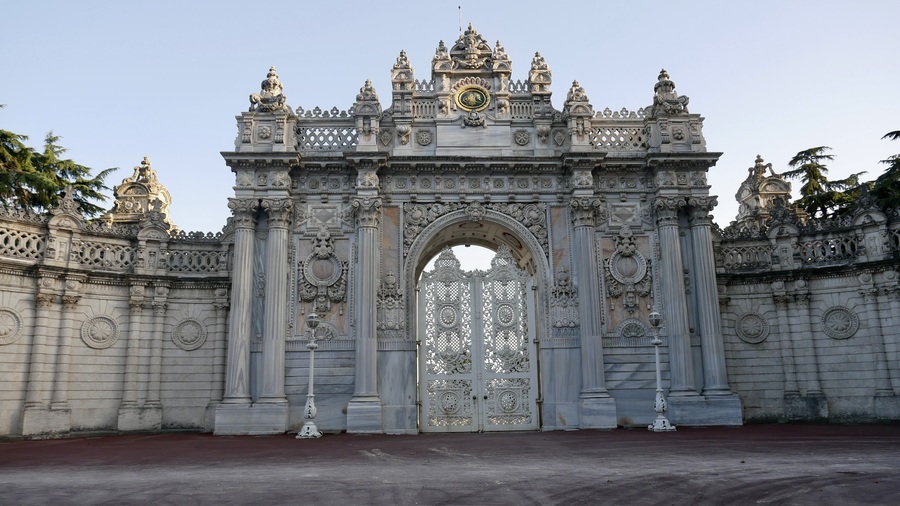
The Dolmabahçe Palace consists of three sections: the Selamlık, the Harem and the apartments of the crown prince.
In the Selamlık, you can follow a self-guided audio tour through lavishly furnished rooms. The ceremonial hall—with its massive chandelier and resplendent dome ceiling—is particularly noteworthy.
The Harem is where the Sultan’s wives, children, and concubines resided. There, you’ll also find the room in which Ataturk lived out the last few years of his life.
The apartments now house a museum that features paintings from prominent Turkish and international artists.
Photography is not allowed inside the palace or Harem.
Additional Things to Do in Istanbul
The old and new parts of the city are where most tourists focus their itineraries. And if you only have three days or fewer in Istanbul, I suggest that you spend the bulk of your time there too.
But Istanbul is huge and dynamic and pulsing with character. Its neighborhoods are diverse and varied and brimming with things to see.
-
Bosphorus Cruise
The Bosphorus cuts through Istanbul, connecting the Marmara Sea with the Black Sea. Cruising the Bosphorus is, without a doubt, one of the top Istanbul tourist activities. Beautiful wooden seaside mansions dot the shoreline, as do royal palaces, imposing mosques, and forested parks.
There are a number of ways to explore the city’s main waterway—some lasting a mere three hours, and others taking up most of the day.
We chose to take the public ferry since we were able to squeeze an extra day into our Istanbul itinerary.
A full-day Bosphorus Cruise aboard the public Sehir Hatlari ferry takes you on a two-hour trip up toward the north end of the strait. Although you can’t reach the Black Sea by ferry, you can get close. The last stop on the route is Anadolu Kavagi, a quaint fishing village chock full of seafood restaurants.
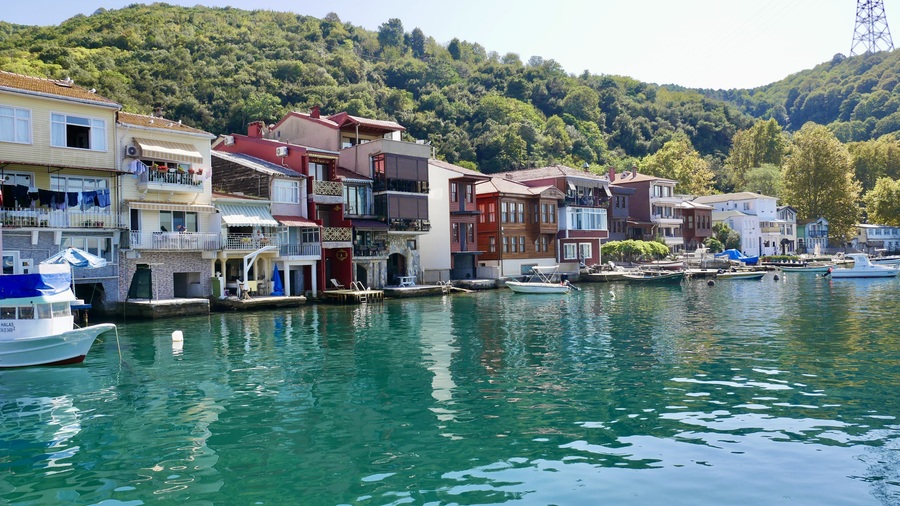
If you don’t have a whole day to dedicate to the Bosphorus, you can join a river cruise. Tours of the Bosphorus include everything from romantic sunset sails to 3 hour sightseeing excursions with a pitstop on the Asian side of the city.
-
Fener and Balat Neighborhoods
While actually two different neighborhoods with very different histories, the names “Fener” and “Balat” have now become almost interchangeable. I’ve tried to look up maps of the respective neighborhoods, but the line seems blurred entirely. Formerly Istanbul’s Greek Orthodox and Jewish neighborhoods, today Fener and Balat are some of the city’s trendiest. They draw visitors to their colorful houses, antique shops, bustling cafes and art-filled streets.
Fener and Balat boast an architectural style that differs from that of the city’s other neighborhoods. The area is filled with brightly painted wooden houses called “cumbas.” You’ll see lots of people posing for Instagram in the area.
The Greek Orthodox School sits on a hill overlooking the neighborhood. An imposing rust-colored building, it is looks more like a castle from Hogwarts than it does a religious institution.
You can reach the school by following a steep cumba-lined street to the top of the hill. If you continue past the school, you’ll end up a world away, in Çarşamba.
-
St Stephens Bulgarian Church
The Church of Sveti Stefan, known colloquially as the “Bulgarian Church,” sits on a grassy lawn at the entrance of Balat. The church looks somewhat out of place in Istanbul, with its gold-domed steeple and ornamental exterior finishes.
The Church of Sveti Stefen was prefabricated in Vienna out of cast iron and then shipped, largely in tact, all the way to Istanbul.
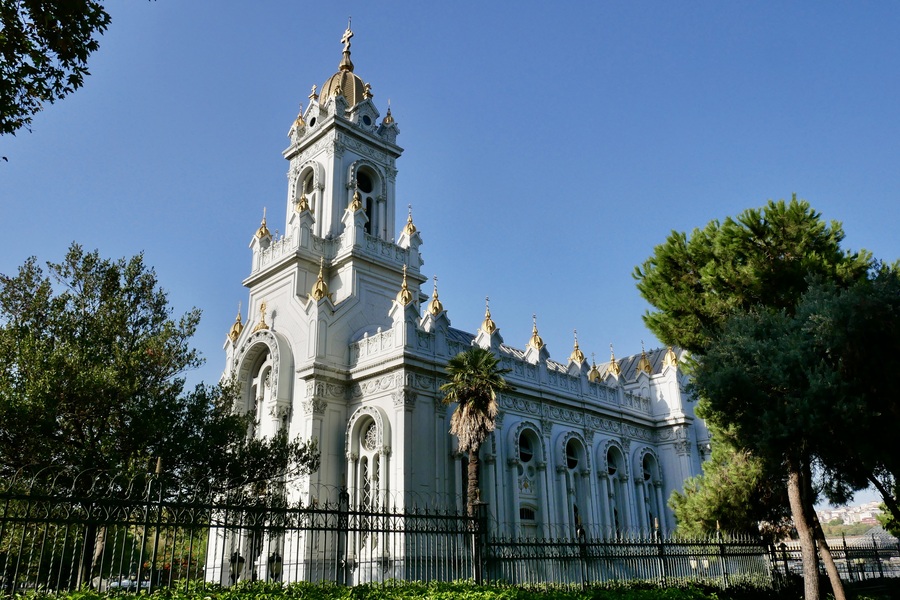
The Bulgarian church dates back to 1898. It is one of the world’s few all-metal churches and shouldn’t be missed when visiting the neighborhoods along Istanbul’s Golden Horn.
-
Çarşamba Neighborhood
Surrounding the Fatih Mosque, just north of Fener and Balat, you’ll find one of the most deeply conservative pockets of Istanbul.
While it isn’t particularly high on most tourist radars, we found the Çarşamba neighborhood to be fascinating.
We stumbled across Çarşamba by accident as we made our way south from the Greek Orthodox School. At first, we thought we had come across a religious celebration of some sort. The dress code stood in stark contrast to other parts of Istanbul. Nearly everyone—men and women alike—seemed to be fully decked out in Islamic garb.
Çarşamba is famous for its weekly Wednesday market that has been held since Byzantine times.
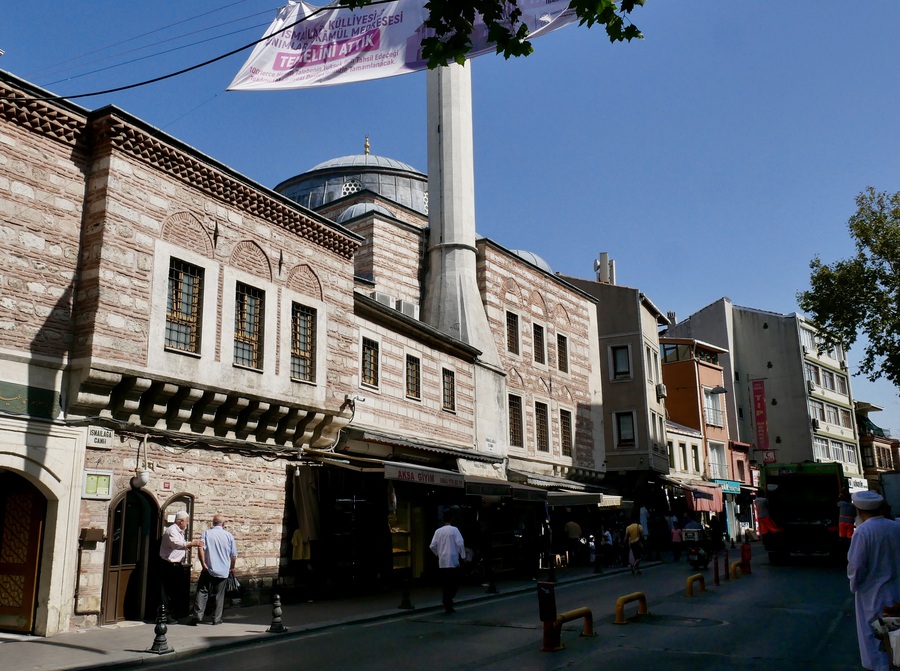
Walking around Çarşamba today, you’ll see hundreds of shops selling religious garb and women clad from head to toe in chador.
We didn’t visit Çarşamba during market day, but nonetheless found that the area provided a fascinating peek into a very different way of life.
-
Berlebeyi Palace
Resembling a miniature Dolmabahçe Palace on the eastern banks of the Bosphorus, the Beylerbeyi Palace is yet another royal residence in Istanbul. The palace, a summer escape commissioned by Sultan Abdülaziz, is one of the top things to see on Istanbul’s Asian side.
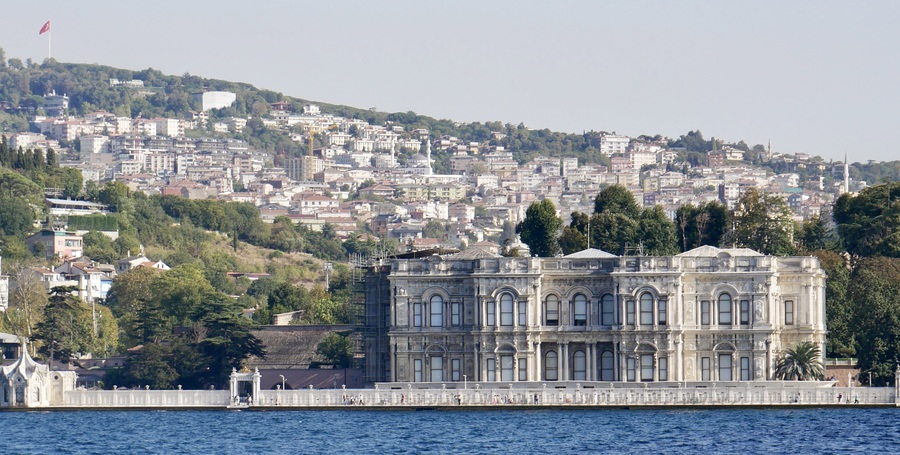
We didn’t enter the summer residence during our trip to Istanbul, but we were able to catch a glimpse of its exterior from our Bosphorus Cruise.
-
Maiden’s Tower
The Maiden’s Tower, also known as Leander’s Tower, dates back to the Byzantine period. It is located on a small islet at the southern entrance of the Bosphorus strait. The tower is one of the most recognizable landmarks in Istanbul.
The tower’s interior includes a restaurant, a cafe, and a museum that showcases the structure’s history and legends. The top floor balcony boasts unencumbered 360 degree views of the city.
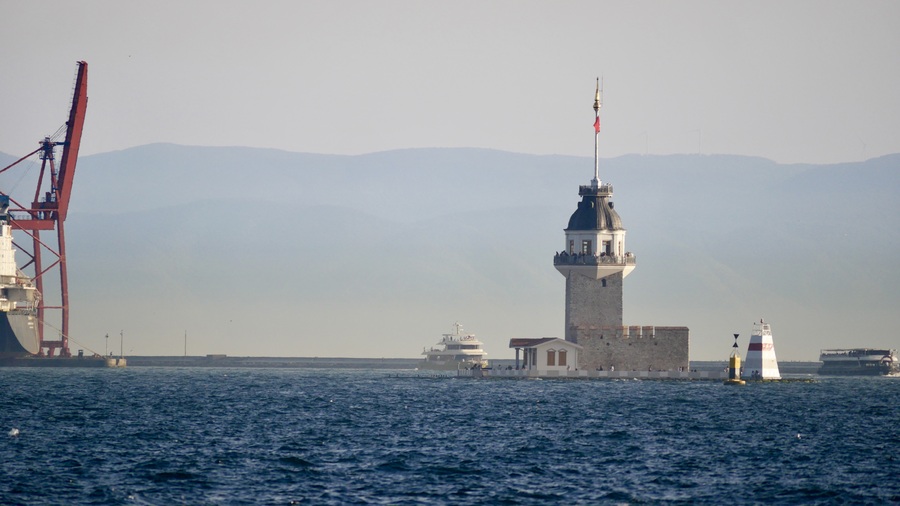
You can reach the Maiden’s Tower by ferry boat from Üsküdar or Kabataş.
Where to Stay in Istanbul
Istanbul is fairly easy to navigate on foot and via public transport. Many accommodations lie clustered in the old town and across the bridge near the Galata Tower.
Our time in Istanbul bookended our two-week trip to Turkey. On the front end, we rented an apartment in the Old Town and enjoyed being within walking distance of the city’s top tourist attractions. Traveling as a group of five narrowed our accommodation options significantly, but we were able to find a place that suited our needs.
On the back end of our trip, we stayed at the Galata Dream Hotel and enjoyed proximity to the vibrant neighborhoods in Istanbul’s New Town.
Other highly-rated options in Istanbul include the Mest Hotel Sirkeci in Fatih (midrange) and the AJWA Sultanahmet (high end)
If you’re going to splurge on a luxurious accommodation, it may as well be at the Pera Palace Hotel—a historic accommodation that has hosted dignitaries from around the world. The hotel dates back to 1892, when it opened with the purpose of hosting passengers of the Orient Express.
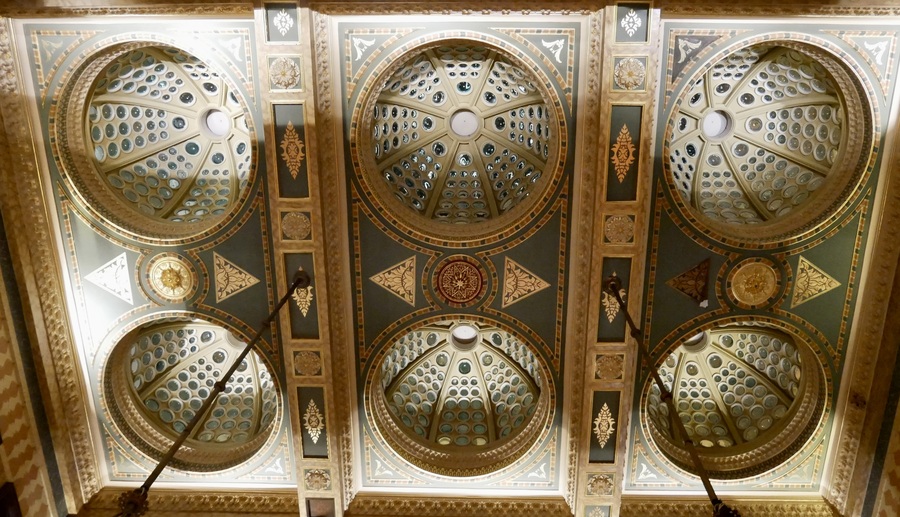
Even if you don’t have the budget to book a room at the museum-hotel. It is worth stepping inside for a peak at the opulent lobby.
Tours of Istanbul
We enjoyed exploring Istanbul at our leisure, over the course of five full days. I loved the freedom of seeing the iconic city at my own pace and getting lost in Istanbul’s maze of colorful neighborhoods.
For travelers with little trip planning expertise, however, Istanbul can be daunting. Istanbul boasts an overwhelming number of things to do, and organizing an itinerary can require extensive research.
If you only have limited time to spend in the city and wish to hit the highlights, you may want to consider 1, 2, and 3 day private tours of Istanbul.
When to Visit Istanbul
Generally speaking, the best time to visit Istanbul is during the shoulder season. May, September and October bring sunny warm weather without the stifling heat of midsummer. We visited Turkey in September and had spectacular weather throughout our stay in Istanbul, Cappadocia, Pamukkale, Ephesus, and Bodrum.
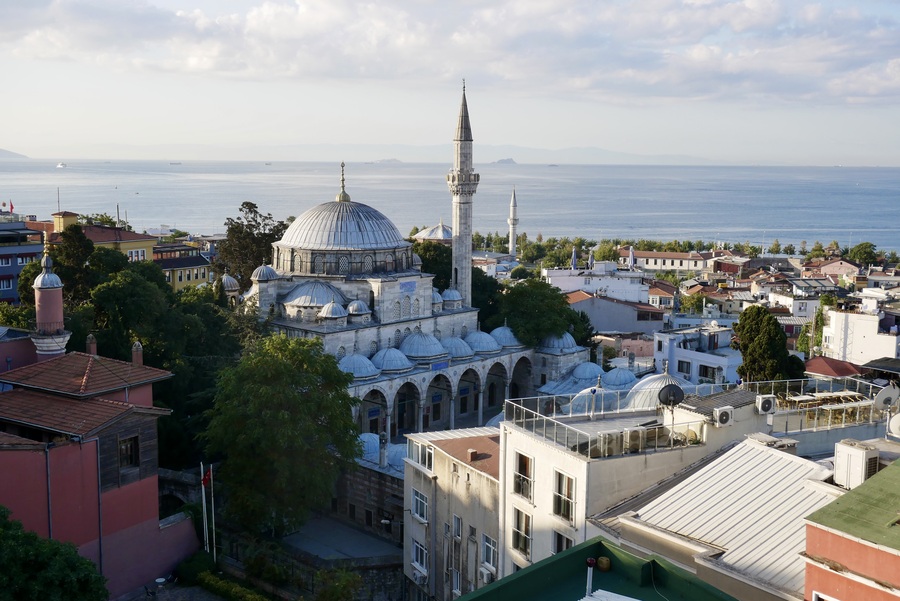
Like much of the rest of Europe, July and August tend to be hot, humid, and crowded.
****
As Westerners, we tend to overlook Istanbul. The city rarely gets mentioned in the same breath as Rome or Paris or London or Barcelona.
And I don’t understand why.
The City of the World’s Desire is mesmerizing and beguiling. It brims with a rich and multilayered history that bridges continents, ideas, religions, and civilizations.
In Istanbul, Turkey’s many faces are on broad display.
It is one of the most beautiful and historically significant metropolises in the world, full stop.

